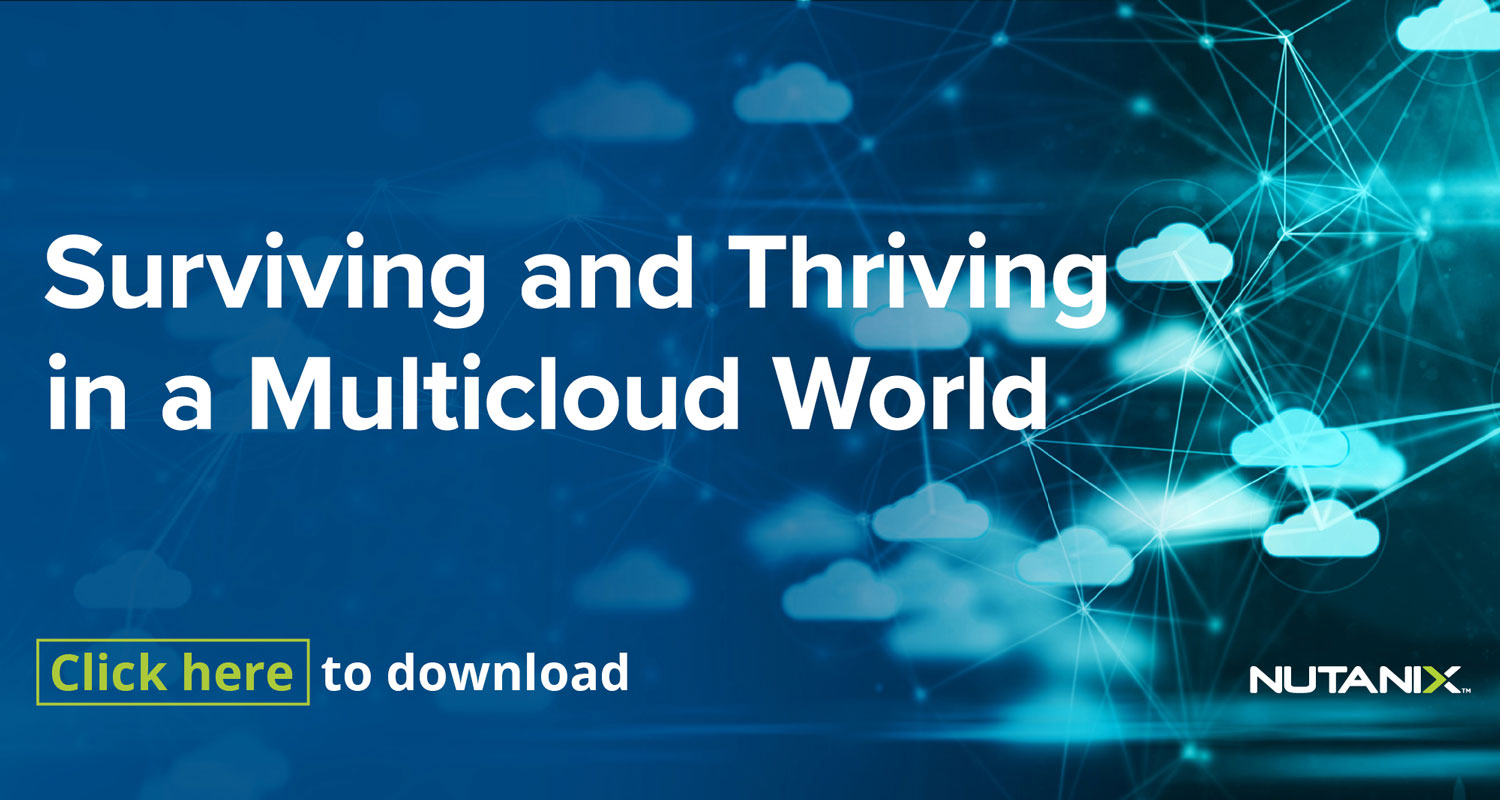 The word “multi-cloud” is so often used in conversation today, you might think that just about everyone has a handle on it. In fact, very few do. The concept of the multi-cloud is complex and disparate, and while it promises flexibility and agility, it can be an exhaustive and expensive exercise. But the bottom line is that it isn’t going anywhere – so business needs to adapt, or just become irrelevant.
The word “multi-cloud” is so often used in conversation today, you might think that just about everyone has a handle on it. In fact, very few do. The concept of the multi-cloud is complex and disparate, and while it promises flexibility and agility, it can be an exhaustive and expensive exercise. But the bottom line is that it isn’t going anywhere – so business needs to adapt, or just become irrelevant.
In a recent IDC InfoBrief, we asked customers how they are not just surviving but thriving in a multi-cloud world. The results are telling, showcasing that while some are approaching a multi-cloud model with caution, there is no doubt that this is and will be a model for the future. Read the report here.
Let’s talk digital
Investment in all things digital is up, not just to drive innovation but to help fuel research and development projects and instil artificial intelligence into an enterprise. According to IDC, 50% of respondents say they are already navigating the path to digital, while 57% say they will pursue a digital in all things strategy in the next five years.
This is important when considering the future of the cloud because digital needs are often met in the middle by cloud infrastructure requirements. It also shows a shift in the future spending goals of the business, where IT budgets are going to shift from “tin” more aggressively to software and devices.
Transformation meets data and security
Suppose you ask any IT team why they want to follow a path to digital transformation. The conversation always leads to digital data assets, the ability to harvest data better, and then use that data to serve the customer. The discussion will then inevitably swing to security, which goes without saying.
But while the promise of data is enormous, many challenges meet the business looking to unlock data across a multi-cloud environment. Disparate environments and the lack of centralised management create a sticky mess in the middle where data is either lost or left behind because of the management headache to centralise it.
In the IDC report, respondents were asked to rate the level of investment they anticipated making in a series of technologies. Naturally, security still trumped the rest with 53%, but surprisingly it was on an even footing with cloud-based infrastructure and applications at 53%. In the third position are data and analytics. In summary, cloud, security and data will move front and centre of all business requirements in the future.
Off premises but private
In South Africa, the hyperscalers have taken a while to catch up. But now that most of them have a presence or at the very least are offering a local service, their popularity is growing. What this has done (inadvertently) is provide the perfect catalyst for growth in private cloud real estate, either on premises or off premises at a cloud provider.
The numbers in the IDC InfoBrief echo the sentiments of South African businesses. While globally the cloud remains a re-platforming process for most IT teams and doesn’t support a one-size-fits-all approach, it is the preferred route, as non-cloud solutions are becoming a smaller part of the overall application portfolio.
What is even more encouraging is that users’ use of private cloud solutions far outweighs the use of public and non-cloud infrastructure and applications. The report also shows how public and private cloud adoption is a two-speed race where both are running entirely in tandem.
This highlights that businesses understand the value of the cloud but are still fairly sure they want their private cloud to walk hand in hand with their public cloud investments. So yes, we are moving to a multi-cloud adoption model, but the infrastructure investment in the cloud is still firmly a hybrid one.
Pros and cons
When asked what the most significant benefits clients see from deploying a multi-cloud strategy, respondents still cite innovation and the delivery of new products and services as the number one factor. In close second is business transformation, and third is reducing vendor dependency and lock-in. The latter is fascinating and adds fuel to the fact that vendors need to evolve from unwieldy licensing and services models to embrace modern subscription-based ones.
Conversely, when asked about the challenges facing them in a multi-cloud world, the main operational one is the ability to establish consistent security, access control and compliance. Again, we find ourselves back at security.
In second place, users are frustrated with keeping up with ever-changing cloud offerings and pricing models. Third, they also find optimising staff and resources a challenge — something that all South African businesses can relate to as they struggle to combat the ongoing brain drain and skills gap.
Ultimate goals
The report is filled with interesting pearls of wisdom and how customers use their IT budgets to enable their cloud goals. We have only touched on a tiny percentage of them, so I encourage you to download the full report and use it as a helpful reference when talking cloud to the C-level executives in your organisation.
To close, let’s state what globally IT leaders feel are their top IT goals. They are security, improving the performance of systems/applications, cost control/lowering costs and improving customer experience. Where do these sit on your business compass?
- Rowen Grierson is regional sales director at Nutanix sub-Saharan Africa
- This promoted content was paid for by the party concerned

